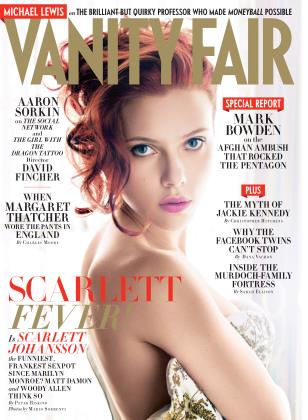Sign In to Your Account
Subscribers have complete access to the archive.
Sign In Not a Subscriber?Join NowHOT TYPE
In 1994, Blake Nelson's seminal coming-ofage text, Girl, introduced us to Andrea Marr, a bright, sensitive, &,v,vr-era Holden Caulfield for tortured, wannabe-rebel good girls. Nelson's intimate depiction of Andrea—equally unmoored in the grunge clubs of Portland, Oregon, and in her high-school locker room, rocked by teen lust and a desire for independence—created a cultish following, the tales of frequent rereadings the stuff of legend. Today, Nelson hooks us up with Andrea in Dream School (Figment), an elite East Coast college, where the exquisite hell of searching for meaning and self rolls on. So clear the weekend and make room in your backpack. In the season of the sequel, Luis Alberto Urrea'sQueen of America (Little, Brown) magically spins a vibrant, larger-than-life fiction based on the "Saint of Cabora," his great-aunt, who fled a violent Mexican rebellion for a new life in the U.S., a cabal of ardent pilgrims and assassins in fervent pursuit. After abandoning his family, a disillusioned I.R.S. agent vanishes into the jungle in Lydia Millet's richly imagined Ghost Lights (Norton). The poems in Meghan O'Rourke'sOnce (Norton) illuminate and echo themes of loss and grief found in her recent, highly acclaimed memoir, The Long Goodbye, Karen Karbo completes her "kick-ass women" trilogy with How Georgia Became O'Keeffe (Globe Pequot)—part bio, part life lessons on living passionately, making art, taking risks, and embracing independence.
The incomparable Don DeLillo's debut story collection, The Angel Esmeralda: Nine Stories (Scribner), was only 30 years in the making; that doesn't seem crazy to me at all. The Europeans and Africans celebrate them while the Chinese sometimes imprison them, but the role of the "public intellectual" in American culture is less defined; Jonathan Lethem's essay collection The Ecstasy of Influence (Doubleday) attempts to rectify that. I n Something UigentIHave to Say to You (Farrar, Straus and Giroux), Herbert Leibowitz works through the life of poet William Carlos Williams, whose uniquely American voice both grounded and elevated the lives of the common folk. John Berger'sBento's Sketchbook (Pantheon) is an impressionistic exploration of textembedded art. In Hedy's Folly (Doubleday), Richard Rhodes decodes the way the spectacular starlet Hedy Lamarr helped invent a jamproof radio guidance system for torpedoes. Susan Hertog profiles the friendship and Dangerous Ambition (Ballantine) of unconventional, self-made women writers Rebecca West and Dorothy Thompson. Didn't believe it was possible for Carrie Fisher to bare another addiction—or another memoir? Surprise! Shockaholic (Simon & Schuster) delivers a charged account of her getting high on electroshock therapy. Zap.
ELLISSA SCHAPPELL
Charles Shields writes the first authorized bio of Kurt Vonnegut, And So It Goes (Henry Holt). Mr. Delicious, Ed Levine, lives for Serious Eats (Clarkson Potter). Philip Eade heralds a young Prince Philip (Henry Holt). Hermes Mallea tramps through the Great Houses of Havana (Monacelli). Robert K. Massie lies down with Catherine the Great (Random House). Bradford Morrow delights in The Uninnocent (Pegasus). Joshua David and Robert Hammond, the visionaries who dreamed up the High Line (Farrar, Straus and Giroux), stroll through New York City's "park in the sky." Deborah Needleman decorates The Perfectly Imperfect Home (Clarkson Potter). Mark Abrahams is behind Mark Abrahams (Damiani Editore). Umberto Eco invites conspiracy in Prague Cemetery (Houghton Mifflin Harcourt). Richard Kirshenbaum chronicles his life in advertising in Madboy (Open Road).
 View Full Issue
View Full Issue












Subscribers have complete access to the archive.
Sign In Not a Subscriber?Join Now